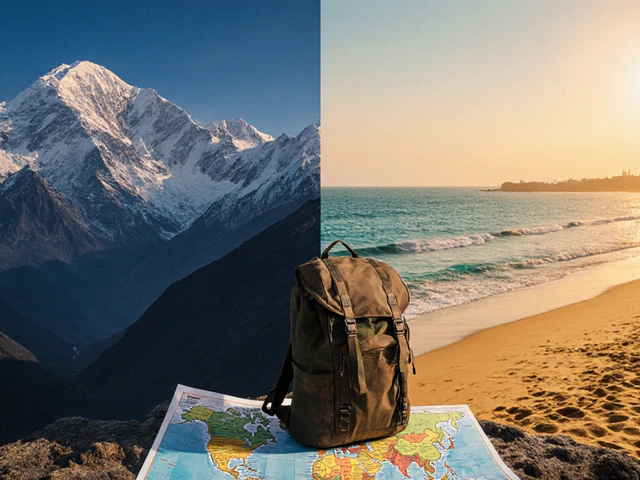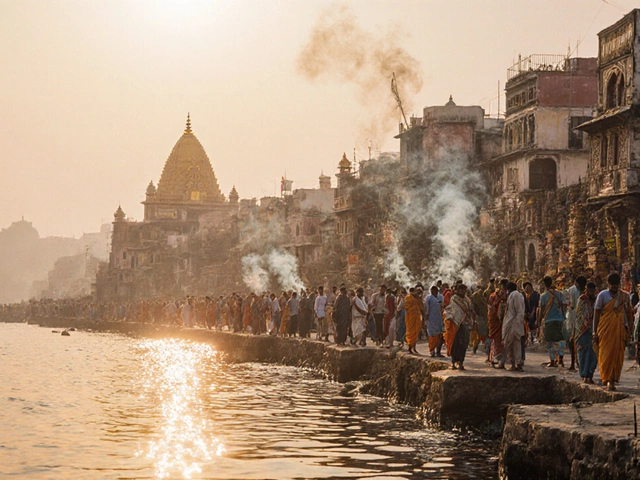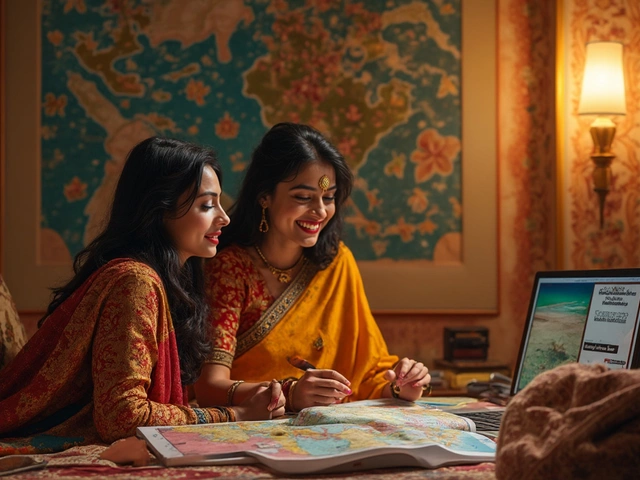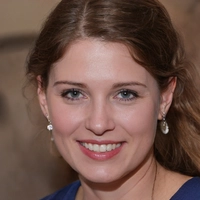So, you want to visit the single most culturally diverse city in India? Here’s the thing—India is full of wildly different languages, religions, and traditions. But not every city mixes them all in the way that makes every day feel like an adventure.
If you’re after real variety—where you can bump into a Parsi bakery, a vibrant church, a temple packed with history, and hear five languages before lunch—only a couple of places truly fit the bill. And yes, there are clear favorites that travelers and locals both call “India in miniature.”
Knowing which city tops the list helps you plan what to eat, where to walk, and even which festivals to time your trip around. Whether you’re into snapping street shots or just eating your way through different worlds, picking the right city will totally change what you get out of your trip.
- Why Cultural Diversity Matters in Travel
- India’s Biggest Melting Pot: The Obvious Winner
- What Diversity Looks Like Day-to-Day
- Food, Festivals, and Faces: The Real Experience
- Tips for Exploring Diverse Neighborhoods
- Making the Most of Your Visit
Why Cultural Diversity Matters in Travel
Ever wonder why people rave about certain travel spots? Nine times out of ten, it’s not just the big sights or fancy hotels—it’s the feeling of actually experiencing something new. That’s where cultural diversity jumps in and takes things up a notch. When a city is packed with different communities, traditions, and food, you get those real, mind-blowing ‘wow’ moments that no resort or tour bus can copy.
Check this out: India itself is home to over 2,000 ethnic groups and more than 1,600 spoken languages. Now imagine walking through a city where each community brings their distinct style—whether it’s architecture, festivals, music, or the mouthwatering street food that locals swear by. It’s basically a shortcut to sampling all of India without crisscrossing the country.
What do you actually get out of visiting super-diverse spots? Here are some quick wins:
- Local vibes get way more interesting—one neighborhood might feel totally different from the next.
- Taste-testing food from different regions in a single day is totally possible.
- Festivals and public events happen all year, so you’ll probably run into one (or three).
- You learn how people with different backgrounds live side-by-side, which you won’t pick up from history books or TV shows.
Recent tourism surveys show that cities seen as “diverse” get more repeat visits. People just have more reasons to come back. It’s not hard to see why—the real-life mix gives a deeper understanding of multicultural cities and shows the good (and sometimes tricky) ways mixed communities work in practice.
India’s Biggest Melting Pot: The Obvious Winner
If you’re searching for the most culturally diverse city in India, all roads pretty much lead to Mumbai. It’s not even close. Mumbai pretty much wrote the book on mixing it up. People from across India—and even beyond—have flocked here for work, dreams of stardom, or just better opportunities. You’ll hear at least 16 languages on a morning train commute. It’s a real mash-up: Maharashtrians, Gujaratis, Tamilians, North Indians, Parsis, Jews, Christians—each with their festivals, food, and local hangouts.
Just look at the facts. Over 22 million people call Mumbai home, with no one group forming a clear majority. Not only is it the heart of Bollywood, it’s the business capital and a hub for every kind of migrant. There are over nine recognized religious communities with their own major celebrations—Ganesh Chaturthi, Eid, Christmas, Navroz, Durga Puja, Holi, and more all jostle for space on the calendar and in the streets.
| Community | Main Areas | Key Festivals |
|---|---|---|
| Maharashtrians | Dadar, Girgaon | Ganesh Chaturthi |
| Gujaratis | Bandra, Ghatkopar | Navratri |
| South Indians | Matunga, Chembur | Pongal, Onam |
| Parsis | Marine Lines | Navroz |
| Muslims | Byculla, Mohammed Ali Road | Eid |
| Christians | Vasai, Bandra | Christmas |
This city didn’t just wake up like this. It’s shaped by history: British port, textile mills, and constant waves of migration—every decade or so, a new community arrived and set up shop (literally and figuratively).
But what really proves Mumbai’s spot as the most culturally diverse city is how you don’t need to hunt for culture—it’s waiting on every street and station. You can get Idli for breakfast, Gujarati thali for lunch, Parsi Patra ni Machhi for dinner, and top it off with a Jewish bakery treat, all without leaving the city limits—or even the same neighborhood, if you’re hungry enough.
No matter which background you come from, you’ll fit right in. Mumbai is India’s open invitation to jump into its incredible mix—and there’s nothing else quite like it in the country.
What Diversity Looks Like Day-to-Day
Waking up in a city like Mumbai—India’s go-to for cultural diversity—means every walk outside hits you with a mashup of sights and sounds. Early morning, you’ll spot Gujarati sweet shops opening, Irani cafés serving bun-maska, and Muslim families heading to mosque while the neighborhood church begins its prayers. Sometimes, you get temple bells and the call to prayer almost back-to-back.
Local trains in Mumbai are a moving snapshot of multicultural cities. You’ll hear Tamil, Marathi, Hindi, Gujarati, English, Bengali, and sometimes Malayalam—all in one compartment. Auto rickshaw drivers chat in Marathi, shopkeepers throw in bits of Hindi and Gujarati, and in the same street, you’ll pass people in saris, hijabs, kurtas, and jeans.
Residential areas have their own personality. For example, Matunga is packed with South Indian temples and dosai stalls; Byculla has strong Muslim and Goan Christian vibes; Dadar balances Maharashtrian with Parsi bakeries; and Bandra’s old lanes can throw you straight into Portuguese church fairs. Want proof? Check out how diverse your meal options get:
| Area | Notable Community | Food Specialty |
|---|---|---|
| Matunga | South Indian | Dosa, Filter Coffee |
| Byculla | Muslim & Christian | Biryani, Goan Sausages |
| Colaba | Parsi & Irani | Berry Pulao, Bun-Maska |
| Dadar | Maharashtrian | Misal Pav, Modak |
| Bandra | Christian & East Indian | Vindaloo, Sorpotel |
Festivals pop up every week. One month it’s Ganesh Chaturthi with massive idols rolling down main roads; the next, it’s Eid with busy nighttime food stalls in Bohri Mohalla. Christmas in Bandra lights up the whole suburb, while Navratri music pulls huge crowds in Vile Parle.
So, daily life in Mumbai spells out “cultural diversity” in the most obvious ways. No matter where you go, you’re surrounded by locals celebrating their backgrounds, sharing space, and making Mumbai seriously special. It’s the easiest city in India to be a curious tourist—even people who grow up here keep finding new customs all the time.
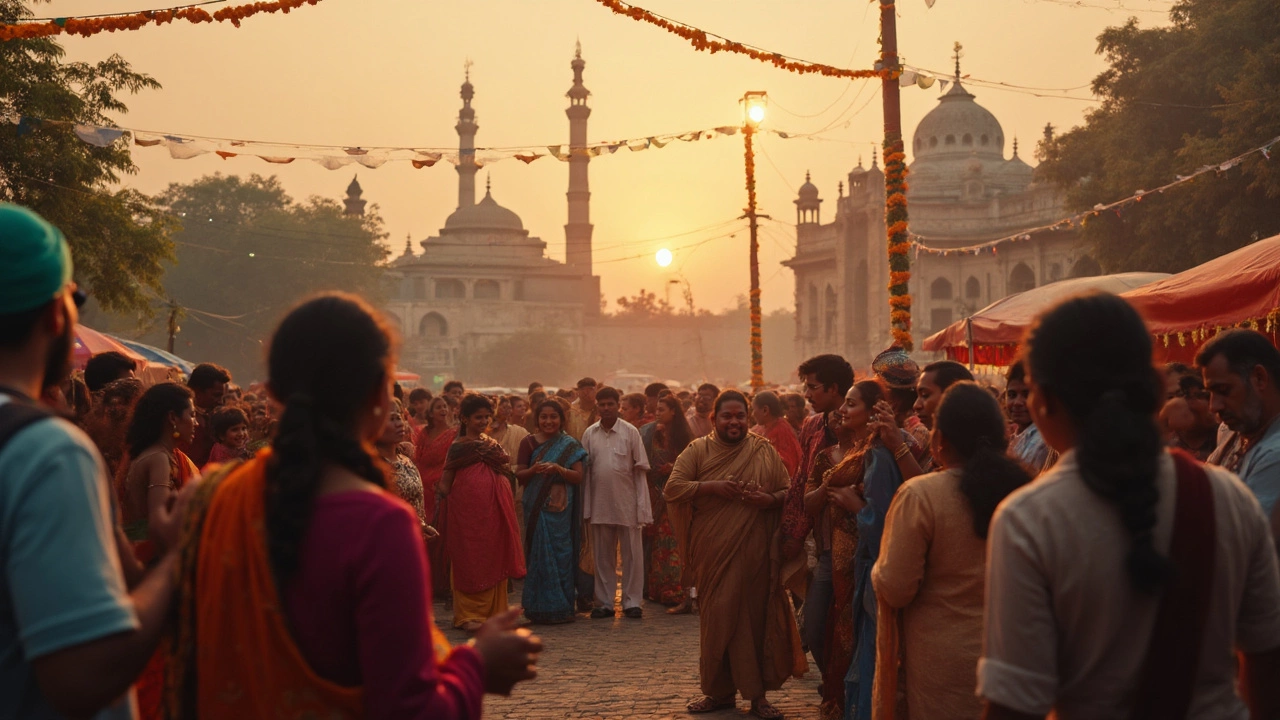
Food, Festivals, and Faces: The Real Experience
If there’s anywhere you can get the real feel of cultural diversity in India, it’s through the food, the busy festival calendar, and the incredible mix of people. Let’s break down what you’ll see, eat, and experience day-to-day in the country’s most multicultural city—Mumbai.
Food comes first because honestly, there’s no better way to taste a culture. In Mumbai, you can wake up to Irani chai and bun maska in a Parsi café, grab South Indian dosas for lunch, sink your teeth into spicy Maharashtrian vada pav from a street cart, and finish your evening with a North Indian butter chicken or even Chinese-influenced hakka noodles. Missing home? There’s even a strong Jewish and Armenian influence in bakeries around Byculla and Cuffe Parade. It’s truly a culinary tour without ever leaving the city limits.
Now, about the festivals. Mumbai doesn’t stop celebrating. You’ll see Ganesh Chaturthi with giant idols and crazy street dancing, Holi with color everywhere, Eid feasts that spill onto Mohammed Ali Road, and Christmas lights covering Bandra’s churches. Plus, don’t miss Gudi Padwa, Navroz (that’s the Parsi New Year), Diwali, and New Year’s Eve. Each one brings out different foods, clothes, music, and even languages. In fact, over 40% of Mumbai’s population are migrants—meaning every festival is a chance to see a new face and hear a new story.
Speaking of faces, you’ll meet people from just about every background here. Walk down Colaba, and you’ll bump into Gujaratis running textile businesses, Tamilians managing Udipi restaurants, Muslims welcoming you near Minara Masjid, and Christians heading to Sunday mass. Even Bollywood, with its mix of stars from all across India, is based here because of this unique multicultural vibe.
If you want insider tips, check out:
- Crawford Market for Parsi, Bohri, and Maharashtrian snacks.
- Mahim and Bandra during Eid for mouthwatering kebabs and sweets.
- Matunga for authentic South Indian filter coffee and dosas.
- Juhu beach for Gujarati and Sindhi delicacies on food carts.
Want to see how all this diversity stacks up in numbers? Here’s a quick snapshot:
| Community | Presence in Mumbai (Approx.) | Major Local Event |
|---|---|---|
| Maharashtrians | 40% | Gudi Padwa |
| Gujarati | 20% | Navratri |
| Muslims | 18% | Eid, Muharram |
| South Indians | 8% | Pongal, Onam |
| Parsis | <0.5% | Navroz |
So, when people say Mumbai is ‘all of India in one place,’ they’re not exaggerating. Dive in, talk to everyone you meet, eat everything, and don’t be shy about joining a street festival even if you have no idea what the celebration is about. That’s the best way to feel the real multicultural buzz of this city.
Tips for Exploring Diverse Neighborhoods
If you want to soak up real cultural diversity in India’s top city, skip the guidebook circuit and dig into local neighborhoods. Mumbai, often called “India’s melting pot,” is packed with communities from nearly every corner of the country. The real flavor lives in its lanes—not just at tourist hotspots.
First up: hit neighborhoods like Bandra, Byculla, Mahim, and Matunga. For Parsi bakes, Irani cafés in Fort and Churchgate are a tasty start. Mahim is home to mosques, churches, temples, and the famous Mahim Dargah. Matunga offers up South Indian snacks, and Bandra brings Portuguese history, colorful street art, and funky markets.
- Walk early in the morning—markets open, locals shop, and you don’t fight crowds.
- Join a local food tour or heritage walk. Mumbai has dozens: look for ones that dive into different faiths, cuisines, or even Bollywood film spots.
- Don’t just stick to tourist strips. Side streets often hide the real gems—like hidden Jain temples or Goan bakeries.
- Hop local trains to see not just the city, but also the mix of people coming together. Western line if you love diversity, Central for unique old markets.
- Respect neighborhood customs, especially around places of worship. Dress modestly and ask before taking photos inside sacred spots.
| Neighborhood | Main Communities | Must-See |
|---|---|---|
| Byculla | Muslims, Parsis, Jews | Magen David Synagogue |
| Matunga | Tamils, Gujaratis, Maharashtrians | Filter coffee spots, South Indian temples |
| Bandra | Catholics, East Indians, Sindhis | St. Andrew’s Church, Ranwar Village |
| Fort/Churchgate | Parsis, Maharashtrians | Irani cafés, heritage buildings |
Don’t rush. Block at least half a day for each area—trying street food, chatting with shop owners, or just people-watching. Switch up your route based on what’s happening that day. If there’s a festival (think Ganesh Chaturthi or Eid), local neighborhoods are where the energy is wildest and most welcoming.
And if you want to dive even deeper, visit during December or August-September—these months jam-pack Mumbai with festivals, bringing every community out onto the streets. Just bring comfy shoes, an open mind, and a big appetite!
Making the Most of Your Visit
If you’re going to a city known for its cultural diversity, you want to make the most of every minute, right? Here are some ways you can not just see the sights, but really dive into what makes the place special—and walk away with stories you can’t get anywhere else.
- Walk, Don’t Drive: The best way to soak in a city’s multicultural buzz is to slow down. A stroll through neighborhoods like Byculla in Mumbai (where you’ll spot Hindu temples, Jewish synagogues, and mosques within a few blocks), or Fraser Town in Bengaluru (famous for its Christmas lights and Ramadan food stalls) reveals everyday life across different communities.
- Sample Street Food Guided by Locals: Hop on a food tour or just follow a hungry local’s advice. Did you know Mumbai’s Mohammad Ali Road serves over 40 types of kebabs during Ramadan? Or that Kolkata’s Chinatown serves the only authentic Chinese breakfasts in India every Sunday morning?
- Time Your Trip Right: Plan around major festivals. Diwali, Eid, Christmas, and even smaller events like Parsi New Year all collide in these big cities. You’ll feel the place come alive with fireworks, processions, and pop-up food stalls.
- Learn Basic Phrases: Even a simple ‘Namaste’, ‘Kem Cho’, or ‘Vanakkam’ earns smiles. In cities like Mumbai, you’ll hear Marathi, Hindi, Gujarati, English—and even bits of Tamil and Urdu in the same market.
- Stay in Mixed Neighborhoods: Skip the fancy hotel zone. Try a boutique stay in Dadar, Fort, or Bandra (if you’re in Mumbai) or in Whitefield or Basavanagudi (if you’re in Bengaluru). You’ll meet neighbors from all over India and witness real daily life.
- Respect Local Customs: Dress modestly when visiting temples and mosques, take off your shoes, and always ask before taking photos, especially during festivals or family gatherings.
Lots of travelers say the best part about these culturally diverse cities is how easily strangers strike up a conversation. Feel free to ask for directions or food tips—they’re usually happy to share. And don’t stress about language—most major cities in India are used to visitors and a mix of English plus gestures always does the trick.
| City | No. of Major Communities | Languages Spoken | Popular Festivals |
|---|---|---|---|
| Mumbai | 15+ | Marathi, Hindi, Gujarati, English, Tamil, Urdu | Ganesh Chaturthi, Eid, Christmas, Gudi Padwa |
| Bengaluru | 10+ | Kannada, English, Hindi, Tamil, Telugu | Karaga Festival, Eid, Christmas, Pongal |
| Kolkata | 12+ | Bengali, Hindi, English, Chinese | Durga Puja, Chinese New Year, Christmas, Eid |
See how easy it is to get a little taste of everywhere with just a city bus ride or a walk down the street? That’s what makes these places ace for cultural tourism in India.

